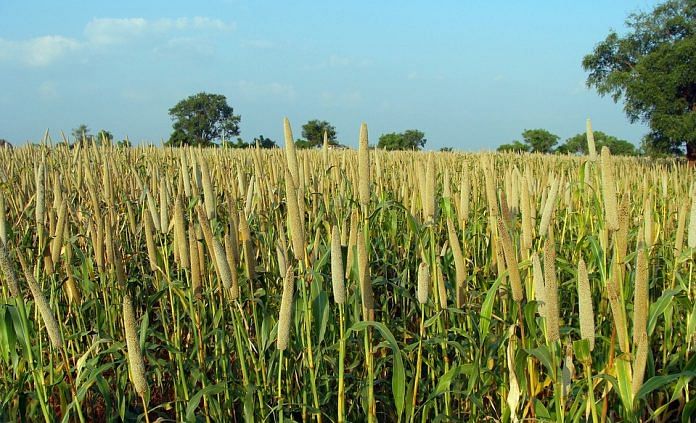Study shows consumption of biofortified bajra also improves learning and mental abilities among school-going children.
New Delhi: Biofortified pearl millet (bajra) can be a sustainable antidote for iron deficiency among adolescents in India and improve cognitive outcomes, a study published in the Journal of Nutrition claims.
The study, conducted in Maharashtra among 140 economically-disadvantaged 12-16-year-olds, compared the effects of eating biofortified iron pearl millet to the conventional one. Their cognitive skills were measured before and after six months of consuming bajra.
What is biofortification?
Biofortification is a process through which nutritional quality of crops can be improved by breeding crops, either conventionally or through modern biotechnology. An earlier study also found out that eating the biofortified pearl millet for six months resolved iron deficiency, faster than the conventional pearl millet.
The pearl millet is already being seen as an alternative to rice, a thirsty crop, in order to reduce India’s water consumption for irrigation. Biofortifying the pearl millet can thus also serve to combat the severe anaemia levels in the country.
Also read: Why an agriculture economist wants India to dump food subsidies
The need for iron
Lack of iron in the diet at an early stage of development can limit brain development and learning capacity, which can further hamper the potential of an individual and negatively impact their quality of life, according to the International Food Policy Research Institution (IFPRI).
However, 52 per cent of girls and 29 per cent of boys between the age of 15 and 19 were found to be anaemic in India by the fourth National Family Health Survey in 2015-2016.
Benefits of iron-biofortified bajra
The study has found that iron-biofortified bajra reduces the harmful effects of iron deficiency significantly. It has also shown to improve learning and mental abilities related to perception, attention and memory among Indian school-going children.
The biofortified bajra can create a positive impact for women. Female adolescents are vulnerable to iron deficiency because of periods of rapid growth accompanied by the onset of menstruation and poor diet.
“Teenage girls are soon entering childbearing years and we know iron status carries over from one generation to the next,” said Dr Laura E. Murray-Kolb, associate professor at the Pennsylvania State University and co-author of the study.
“Therefore, if we can improve a girl’s iron status in adolescence, it can allow her to enter pregnancy with better iron stores, and that benefit will be conferred in a positive way to the next generation,” she added.
Also read: How to grow crops on Mars if we were to live on it
Bajra, a sustainable solution
Many rural communities of India rely on bajra as staple crops for their diet. According to Dr Erick Boy, head of nutrition at HarvestPlus, a global non-profit that promotes biofortified crops, nutrient-enriched versions of these crops can prove to be a cost-effective, sustainable strategy for improving nutrition by eating the foods that are readily available.
“This study reinforces that functional impacts are achievable with a food-based, low-dose intervention like biofortification, which does not require changes in eating behaviour or access to dietary supplements or commercially fortified foods,” he said.






